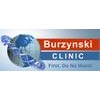
Lenalidomide in Treating Young Patients With Recurrent, Progressive, or Refractory CNS Tumors
Childhood Atypical Teratoid/Rhabdoid TumorChildhood Central Nervous System Germ Cell Tumor24 moreThis phase I trial is studying the side effects and best dose of lenalidomide in treating young patients with recurrent, progressive, or refractory CNS tumors. Lenalidomide may stop the growth of CNS tumors by blocking blood flow to the tumor. It may also stimulate the immune system in different ways and stop tumor cells from growing.

Tipifarnib in Treating Young Patients With Recurrent or Progressive High-Grade Glioma, Medulloblastoma,...
Childhood High-grade Cerebral AstrocytomaChildhood Oligodendroglioma6 moreThis phase II trial is studying how well tipifarnib works in treating young patients with recurrent or progressive high-grade glioma, medulloblastoma, primitive neuroectodermal tumor, or brain stem glioma. Tipifarnib may stop the growth of tumor cells by blocking the enzymes necessary for their growth.

Imatinib Mesylate in Treating Patients With Relapsed or Refractory Solid Tumors of Childhood
Childhood Desmoplastic Small Round Cell TumorChildhood Synovial Sarcoma6 morePhase II trial to study the effectiveness of imatinib mesylate in treating patients who have relapsed or refractory solid tumors of childhood. Imatinib mesylate may stop the growth of tumor cells by blocking the enzymes necessary for their growth.

Antineoplaston Therapy in Treating Children With Primitive Neuroectodermal Tumors
Childhood CNS Primitive Neuroectodermal TumorRATIONALE: Current therapies for children with primitive neuroectodermal tumors that have not responded to standard therapy provide very limited benefit to the patient. The anti-cancer properties of Antineoplaston therapy suggest that it may prove beneficial in the treatment of children with primitive neuroectodermal tumors that have not responded to standard therapy. PURPOSE: This study is being performed to determine the effects (good and bad) that Antineoplaston therapy has on children (> 6 months of age) with primitive neuroectodermal tumors that has not responded to standard therapy.

RO4929097, Temozolomide, and Radiation Therapy in Treating Patients With Newly Diagnosed Malignant...
Acoustic SchwannomaAdult Anaplastic (Malignant) Meningioma27 moreThis phase I trial studies the side effects and best dose of gamma-secretase/Notch signalling pathway inhibitor RO4929097 (RO4929097) when given together with temozolomide and radiation therapy in treating patients with newly diagnosed malignant glioma. Enzyme inhibitors, such as gamma-secretase/Notch signalling pathway inhibitor RO4929097, may stop the growth of tumor cells by blocking some of the enzymes needed for cell growth. Drugs used in chemotherapy, such as temozolomide, work in different ways to stop the growth of tumor cells, either by killing the cells, by stopping them from dividing, or by stopping them from spreading. Radiation therapy uses high-energy x-rays to kill tumor cells. Giving gamma-secretase/Notch signalling pathway inhibitor RO4929097 together with temozolomide and radiation therapy may kill more tumor cells.

Phase I Study of Cellular Immunotherapy for Recurrent/Refractory Malignant Glioma Using Intratumoral...
Anaplastic AstrocytomaAnaplastic Ependymoma12 moreRATIONALE: Biological therapies, such as cellular adoptive immunotherapy, may stimulate the immune system in different ways and stop tumor cells from growing. Donor T cells that are treated in the laboratory may be effective treatment for malignant glioma. Aldesleukin may stimulate the white blood cells to kill tumor cells. Combining different types of biological therapies may kill more tumor cells. PURPOSE: This phase I trial is studying the side effects and best way to give therapeutic donor lymphocytes together with aldesleukin in treating patients with stage III or stage IV malignant glioma.

A Five-Tier, Open-Label Study of IMC-A12 in Advanced Sarcoma
Ewing's Sarcoma /Peripheral Neuroectodermal Tumor (PNET)Rhabdomyosarcoma3 moreThis multicenter study will enroll approximately 185 participants with metastatic or advanced sarcoma, to assess the effectiveness and safety of IMC-A12 monotherapy for this indication. Participants will be stratified into five tiers according to diagnosis: Ewing's sarcoma/peripheral neuroectodermal tumor (PNET) rhabdomyosarcoma leiomyosarcoma adipocytic sarcoma synovial sarcoma. A total of 85 participants will be enrolled initially, 17 in each tier. Participants will receive single agent IMC-A12 every 2 weeks. A treatment cycle will be defined as 6 weeks, with radiological evaluation at every cycle. Safety and response in the initial 17 participants in each tier will be used to determine whether to extend enrollment to the target total of 37 participants per tier.

High-Dose Chemotherapy With or Without Total-Body Irradiation Followed by Autologous Stem Cell Transplant...
Adult Acute Lymphoblastic Leukemia in RemissionAdult Acute Myeloid Leukemia in Remission59 moreThis pilot trial studies different high-dose chemotherapy regimens with or without total-body irradiation (TBI) to compare how well they work when given before autologous stem cell transplant (ASCT) in treating patients with hematologic cancer or solid tumors. Giving high-dose chemotherapy with or without TBI before ASCT stops the growth of cancer cells by stopping them from dividing or killing them. After treatment, stem cells are collected from the patient's blood or bone marrow and stored. More chemotherapy may be given to prepare for the stem cell transplant. The stem cells are then returned to the patient to replace the blood forming cells that were destroyed by the chemotherapy.

p28 in Treating Younger Patients With Recurrent or Progressive Central Nervous System Tumors
Teratoid TumorAtypical10 moreThis phase I trial studies the side effects and best dose of azurin-derived cell-penetrating peptide p28 (p28) in treating patients with recurrent or progressive central nervous system tumors. Drugs used in chemotherapy, such as azurin-derived cell-penetrating peptide p28, work in different ways to stop the growth of tumor cells, either by killing the cells or by stopping them from dividing.

Trial of Afatinib in Pediatric Tumours
Neuroectodermal TumorsRhabdomyosarcomaOpen-label, dose escalation, monotherapy, basket trial with biomarker specific MTD expansion cohort/Phase II part. The trial will consist of 2 parts: Dose finding part to determine the MTD Biomarker specific MTD expansion cohort/Phase II part to assess clinical anti-tumour activity in included tumour types
